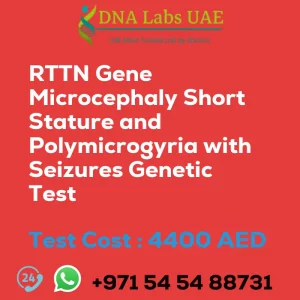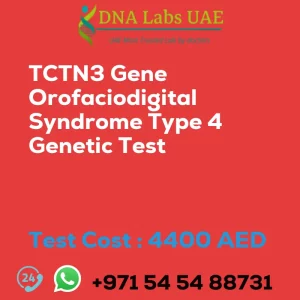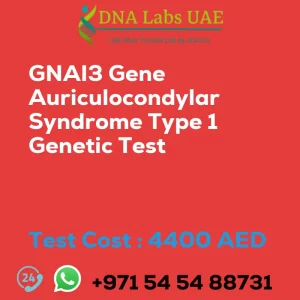GJA1 Gene Oculodentodigital dysplasia Genetic Test
Test Name: GJA1 Gene Oculodentodigital dysplasia Genetic Test
Components: DNA Labs UAE
Price: 4400.0 AED
Sample Condition: Blood or Extracted DNA or One drop Blood on FTA Card
Report Delivery: 3 to 4 Weeks
Method: NGS Technology
Test Type: Dysmorphology
Doctor: Pediatrics
Test Department: Genetics
Pre Test Information: Clinical History of Patient who is going for GJA1 Gene Oculodentodigital dysplasia NGS Genetic DNA Test. A Genetic Counselling session to draw a pedigree chart of family members affected with GJA1 Gene Oculodentodigital dysplasia NGS Genetic DNA Test gene GJA1
Test Details:
The GJA1 gene is responsible for producing a protein called connexin 43, which plays a crucial role in the formation and function of gap junctions. Gap junctions are channels that allow direct communication and exchange of molecules between neighboring cells.
Oculodentodigital dysplasia (ODDD) is a rare genetic disorder that affects multiple systems in the body, including the eyes, teeth, and limbs. It is caused by mutations in the GJA1 gene, leading to a dysfunctional connexin 43 protein.
NGS (Next-Generation Sequencing) genetic testing is a method used to analyze multiple genes simultaneously and identify mutations or variations in the DNA sequence. In the case of oculodentodigital dysplasia, NGS can be used to specifically target and sequence the GJA1 gene, identifying any potential pathogenic mutations.
NGS genetic testing for oculodentodigital dysplasia can help confirm a clinical diagnosis, provide information about disease severity and prognosis, and assist in genetic counseling for affected individuals and their families. It can also be used for carrier testing in individuals with a family history of the condition.
It is important to note that genetic testing should be performed and interpreted by qualified healthcare professionals who specialize in genetics, as they can provide accurate and comprehensive information about the implications of the test results.
| Test Name | GJA1 Gene Oculodentodigital dysplasia Genetic Test |
|---|---|
| Components | |
| Price | 4400.0 AED |
| Sample Condition | Blood or Extracted DNA or One drop Blood on FTA Card |
| Report Delivery | 3 to 4 Weeks |
| Method | NGS Technology |
| Test type | Dysmorphology |
| Doctor | Pediatrics |
| Test Department: | Genetics |
| Pre Test Information | Clinical History of Patient who is going for GJA1 Gene Oculodentodigital dysplasia NGS Genetic DNA Test. A Genetic Counselling session to draw a pedigree chart of family members affected with GJA1 Gene Oculodentodigital dysplasia NGS Genetic DNA Test gene GJA1 |
| Test Details |
The GJA1 gene is responsible for producing a protein called connexin 43, which plays a crucial role in the formation and function of gap junctions. Gap junctions are channels that allow direct communication and exchange of molecules between neighboring cells. Oculodentodigital dysplasia (ODDD) is a rare genetic disorder that affects multiple systems in the body, including the eyes, teeth, and limbs. It is caused by mutations in the GJA1 gene, leading to a dysfunctional connexin 43 protein. NGS (Next-Generation Sequencing) genetic testing is a method used to analyze multiple genes simultaneously and identify mutations or variations in the DNA sequence. In the case of oculodentodigital dysplasia, NGS can be used to specifically target and sequence the GJA1 gene, identifying any potential pathogenic mutations. NGS genetic testing for oculodentodigital dysplasia can help confirm a clinical diagnosis, provide information about disease severity and prognosis, and assist in genetic counseling for affected individuals and their families. It can also be used for carrier testing in individuals with a family history of the condition. It is important to note that genetic testing should be performed and interpreted by qualified healthcare professionals who specialize in genetics, as they can provide accurate and comprehensive information about the implications of the test results. |








